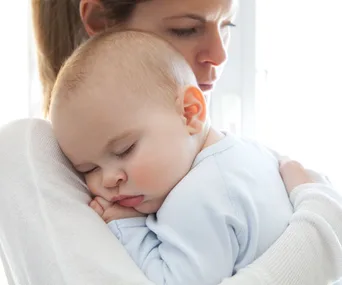Nobody likes to see their child unwell, and when they’re very young there seems to be so much more to worry about.
Are these symptoms normal, or are they the sign of something more serious? How do I treat them safely? Is this a fever, or are they just warm? How DO I take a baby‘s temperature anyway?
In addition to the challenges that parents already face when a child is facing a fever, comes the news from CHOICE that taking their temperature might not be as straightforward as we have been imagining all this time.
When they tested baby thermometers, it was sometimes difficult to find out what kind of temperature reading the thermometer was giving: was it giving the core temperature, the oral temperature, the oral equivalent temperature, or the temporal artery temperature? And all of those things are completely different!
“Parents buying a thermometer off the shelf expect to know what type of temperature the thermometer is displaying, but many of the manuals don’t make it clear,” says says CHOICE’s baby and kids expert Kim Gilmour.
However CHOICE’s findings were that often not even the instruction manuals made it clear what type of temperature they read, so how do we even know if we’re dealing with a fever?
“We found that it can be confusing to know what temperature constitutes an actual fever. It does depend on things like age, what part of the body you’re measuring, and the environment,”
“Also, some thermometers convert the reading to what might be either a core temperature or an oral equivalent, adding to the confusion, and they don’t always make this clear in the instructions.”

“Parents buying a thermometer off the shelf expect to know what type of temperature the thermometer is displaying, but many of the manuals don’t make it clear,” says CHOICE’s baby and kids expert Kim Gilmour.
(Image: Getty Images)And the temperature can differentiate depending on where you’re taking it from too! Taking oral temperature as a baseline, here are the differences in temperature you’re likely to find if you take a temperature from a different part of the body:
Ear: 0.3°C to 0.6°C higher than oral
Armpit: 0.3°C to 0.6°C lower than oral
Forehead: 0.3°C to 0.6°C lower than oral
Read more about the differences in temperatures found in the CHOICE review here.
Then you must take into account the inaccuracies in thermometers too. CHOICE found:
Good digital probe thermometers can meet their claimed accuracy to within 0.1°C.
Ear and forehead thermometers are less accurate, but they don’t generally claim to be as accurate as digital probe thermometers. CHOICE testing has found that they’re generally accurate to within 0.2°C.
But don’t freak out entirely, there are certain things you can be doing to ensure you’re getting an accurate reading for your child each time …

You should always take the temperature from the same part of the body.
(Image: Getty Images)How to take your child’s temperature more accurately
CHOICE recommends the following for getting a more accurate temperature reading on your little one.
Dos:
Find out what your child’s ‘baseline’ temperature is when they’re healthy.
Always take your child’s temperature in the same way and in the same location: oral, rectal, armpit, ear, forehead, etc.
Read the thermometer instructions so you know how to use it and what kind of body temperature the thermometer is displaying – is it the tympanic (ear) temperature, or the oral equivalent?
Make sure your child stays still while you’re taking their temperature. (Easier said than done, we know!)
Make sure the ear thermometer is placed correctly in the ear, otherwise you may get an inaccurate reading. A build-up of earwax can also interfere with accuracy.
Any baby under three months of age who has a fever should be taken straight to the nearest emergency department.
WATCH: Breastfeeding tips by Bounty. Continues after video …
Don’ts:
Don’t take your child’s temperature straight after they’ve bathed or showered, or after they’ve been active. It can raise their core temperature, so you may not get an accurate reading. If they’re sweating, it can also affect the reading of a forehead thermometer.
Don’t take your child’s temperature straight after they’ve had food or drinks, if you’re using an oral thermometer. Hot or cold foods could influence the reading. Wait 15 to 30 minutes before taking their temperature.
Don’t use ear thermometers on infants under six months – they’re generally not recommended due to the size of babies’ ear canals.
Don’t use forehead thermometers on infants under three months; they’re generally not considered accurate for babies this young.
Don’t bother using strip-type thermometers. Our testing has found that they’re very easy to use, but not very accurate.
Don’t use mercury or alcohol thermometers. If they break, they can cause injury or poisoning.

